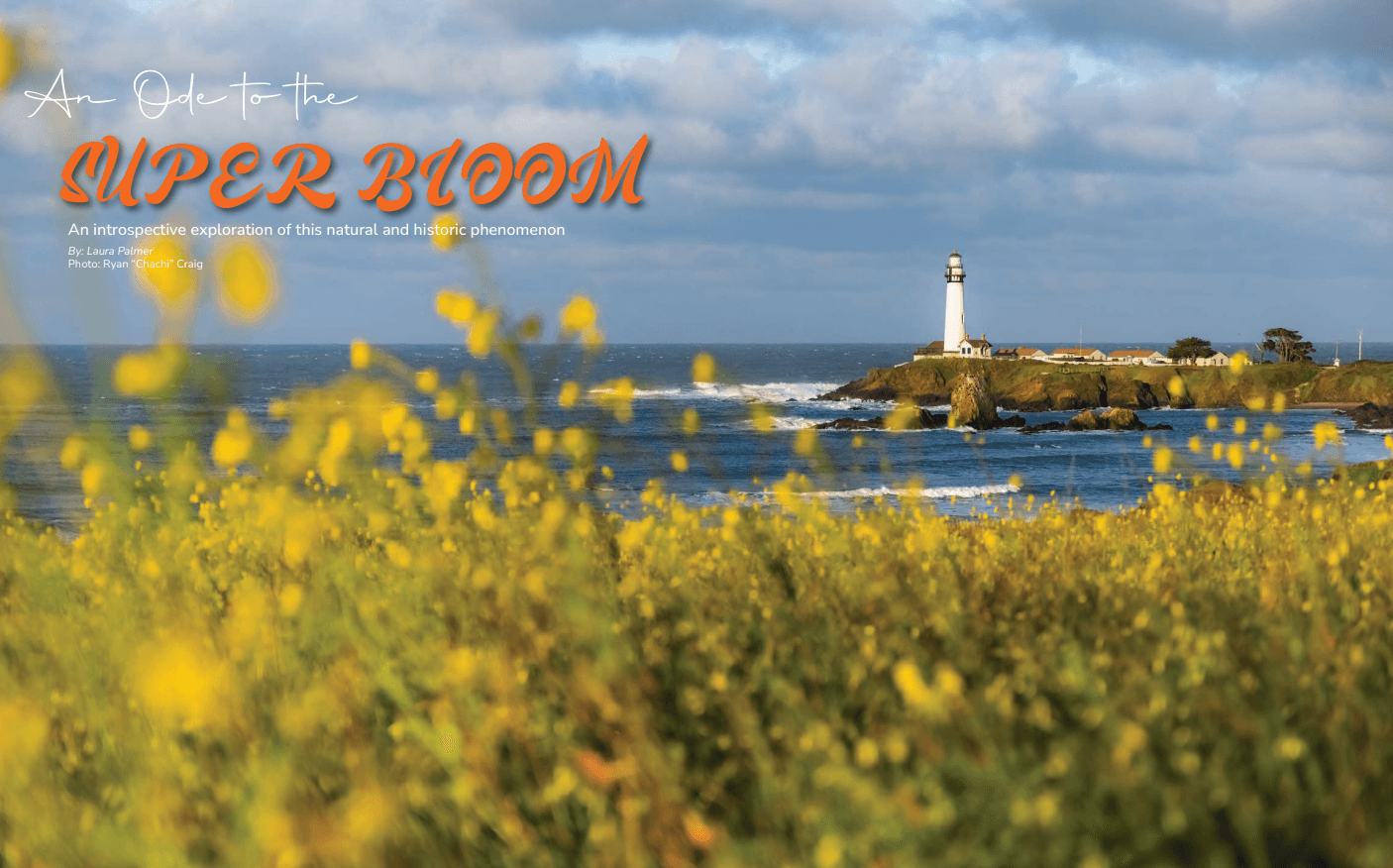This year’s California Super Bloom, which only occurs sporadically after very wet winters, promises an extraordinary eruption of floral color. The large bursts of wildflower growth are known to be so expansive that their breathtaking beauty can even be observed from space.
Embarking on my assignment to cover the Super Bloom (an event with no scientific definition), I hoped to pay homage to this remarkable natural phenomenon and explore something that goes beyond a few rad Insta photos.
To unravel the essence of my adoration, I delved into an introspective exploration of what the Super Bloom means to me. The Super Bloom serves as a reminder of the enduring connection I share with the intricacies of ecology, and where the bloom graciously thrives.
During my high school years in Colorado, I enrolled in a plant class. It sparked a life-long fascination with plant taxonomy, ecology, and the art of observing flowers. My favorite is Heliotropium arborescens, which I affectionately call the Dr. Pepper plant due to its uncanny resemblance in fragrance. It holds a special place in my heart as the first plant I recognized by sight, smell, and touch. Even after 24 years, I find it challenging to choose a single favorite among the many I have come to know and love. TIP: You can spot Heliotropium arborescens around town, gracing the city landscaping near Center Street and Water Street. Discover its magic firsthand.
My thirst for plant knowledge led me on a journey encompassing names, classifications, medicinal uses, and cultural significance. Casual walks became opportunities to share my passion, interrupting friends’ jokes or heartfelt conversations with observations about mundane landscape plants. I would eagerly pluck edible flowers, weird fruits, or grass seeds, and shove it toward them saying, “Try this! It’s edible!” Yes, I was that person— advocating for the appreciation of living things, even though not fully understanding my own enthusiasm.
It is said that Santa Cruz County is the redwood’s favorite place to live, and our array of redwood forests offer Super Bloom seekers a treasure trove. While on a recent jaunt, I saw 20’x20’ patches of Viola sempervirens, the redwood violet, their yellow heads lighting up the forest floor as if they were put there to mimic the sun. You have to look closely to find the pink Pacific starflower, the white two-eyed violets, and the hooker’s fairy bells hiding beneath their leaves, but they are there in abundance. I found checker lilies blooming waist-high to get above the mounds of vetch in The Forest of Nisene Marks State Park in Aptos. The west-facing slopes with their chaparral communities have been fragrant with the native Yerba Santa (Eriodictyon californicum) and its scorpion-like purple inflorescences. The fragrance comes from the leaves, not the flowers.
The lands I appreciate and live on are the unceded territory of the Ohlone tribes, specifically the Tamien in Santa Clara and in Santa Cruz the Awaswas speaking Uypi tribes represented by the modern-day Amah Mutsun Tribal band. I thought of these things and said a little prayer of thank you as I blew the achenes off one of our native ‘dandelions’ Silverpuffs. Land acknowledgements often feel hollow, but I would rather have a fumbled hollow recognition than no mention at all. I am grateful to live and experience this area, but it is clear to me that I have no right to it, only a responsibility to honor the place where I am.
The magnificent flora produced by the torrential rains we received this year is not limited to forests or wild spaces: Jupiter’s Beard along the tracks above the Capitola Wharf and Escalona Drive in the city of Santa Cruz made a stellar showing. And on the side of the Highway 1 at River Street intersection in Santa Cruz, there was a swath of tidy tips blooming for weeks, perhaps the result of some botanarchist (a vigilante with a green thumb) or well-meaning neighbor scattering seed in years past. I’ve seen and heard folks oohing and ahhing over the fields of yellow mustard, purple and white radish filling the disturbed fields and hillsides from the Westside of Santa Cruz to Davenport and farther north. TIP: Mustard and radish fields are great spots for Instagram photos of you, your family, your dog rolling around in a field of wildflowers. While you’re there, trample them, or make crop circles just for fun! This helps reduce the seed load. While you’re out wrecking the stunning weed fields, look lower among the non-native grasses. Spot the glimmering yellow buttercups whose waxy petals make them shine and reflect almost like polished gold. But there’s other areas where we want our seed bank to come back next year so please stay out of the poppy fields, the patches of lupine, owl’s clover, and California goldfields. In the forest, steer clear of the blue carpets of forget-me-nots.
I encourage everyone to get out, look around, learn the name of something new, and maybe make a new friend along the way. Buddha said, “If we could see the miracle of a single flower clearly our whole life would change.”

